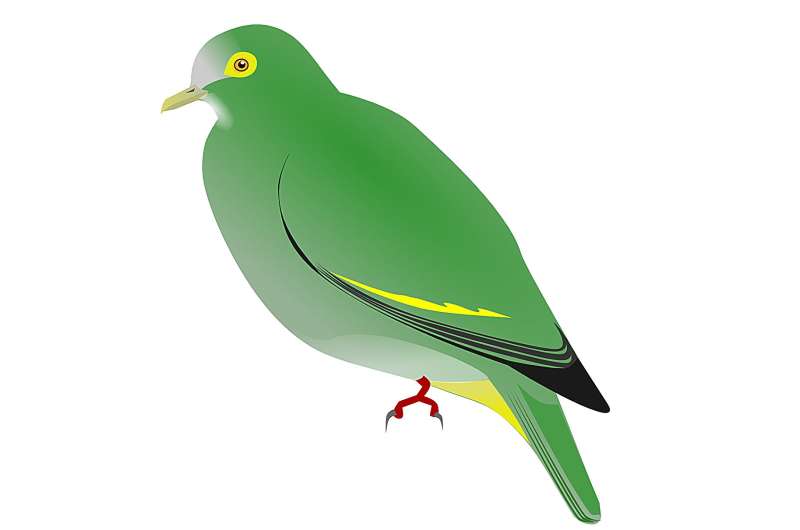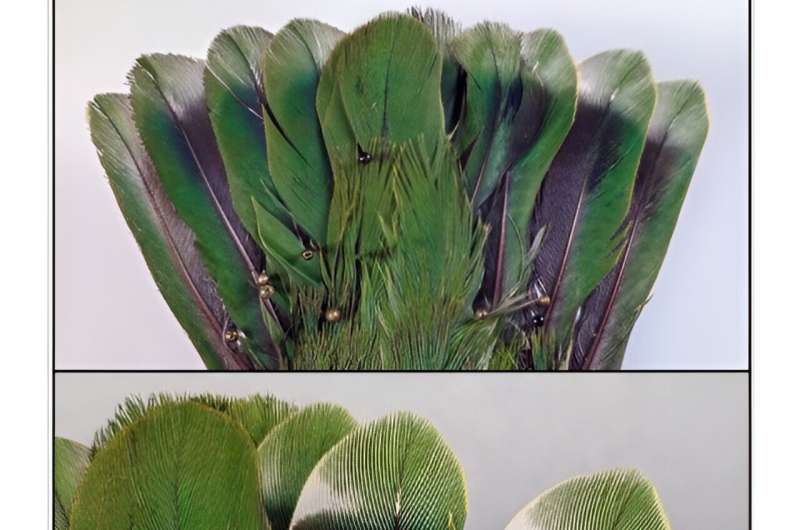This article has been reviewed according to Science X's editorial process and policies. Editors have highlighted the following attributes while ensuring the content's credibility:
fact-checked
trusted source
proofread
A Filipino fruit dove reveals its secrets

In May 1953, Filipino ornithologist D. S. Rabor collected a single female fruit dove on the forested slopes of an active volcano on the Philippine island of Negros. The small apple-green bird, which had yellow edgings on its wings and prominent circles of bare skin around its eyes, was unlike any other known pigeon species. In 1954, Rabor and Yale professor Dillon Ripley described the unique specimen as Ptilinopus arcanus, a name inspired by the Latin word for "secret."
The Negros Fruit Dove, as it is commonly known, has never been seen or recorded again, and remains one of the world's most enigmatic and poorly understood birds. In the absence of any new information, ornithologists have speculated that the bird could be an aberrant individual or a hybrid of two other well-known species.
Now, after more than 70 years, this unique specimen is finally revealing its secrets.
Using DNA sequencing techniques, a team of Yale biologists, led by John Nash, a senior in Yale College, has demonstrated that the Negros Fruit Dove is a very distinct, ancient lineage within the evolutionary radiation of Ptilinopus fruit doves. This species diverged from the other fruit doves in this group nearly 12 million years ago, well before Negros Island had emerged from the sea floor. This suggests that arcanus enjoyed a much broader distribution earlier in its evolutionary history, the researchers say.
Their findings are published in Ibis.
"When I arrived at Yale 20 years ago, we dreamed of solving the mystery of this unique bird," said co-author Richard Prum, the William Robertson Coe Professor of Ornithology of Ecology and Evolutionary Biology in Yale's Faculty of Arts and Sciences. "But we had to wait for the right technology and the right student to really pull it off."

To help guide future efforts to potentially relocate and conserve the species—which may still exist in the wild—the authors also modeled the biogeographic history of montane (or mountain) and lowland forests, where it may be more likely to be found, during the Pleistocene epoch, a period marked by dramatic climate change. They argue that the only known fact about the Negros Fruit Dove—its occurrence on Negros—is more consistent with the biogeographical pattern of montane species in this region.
Accordingly, they identified several poorly explored locales, most notably montane forests in North Negros National Park and on the nearby island of Panay, as areas that should be urgently surveyed for any surviving members of this species.
Nash, who is studying ecology and evolutionary biology at Yale, believes the enigmatic species may yet have more secrets to reveal.
"Having studied its genetics and phylogeny in the lab, I would love to spearhead efforts to rediscover it in the wild," he said.
More information: John A. Nash et al, Species status and phylogenetic relationships of the enigmatic Negros Fruit Dove (Ptilinopus arcanus), Ibis (2024). DOI: 10.1111/ibi.13305
Provided by Yale University



















